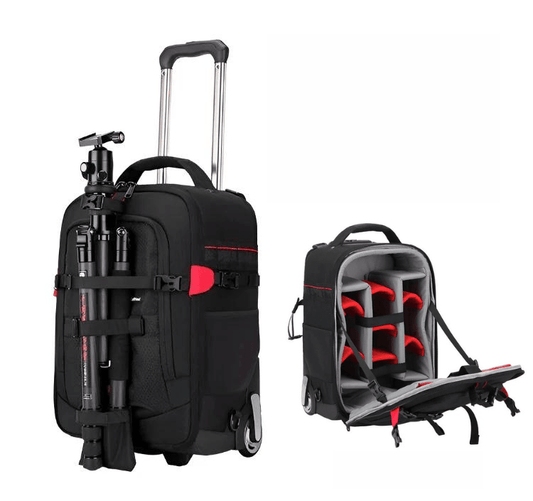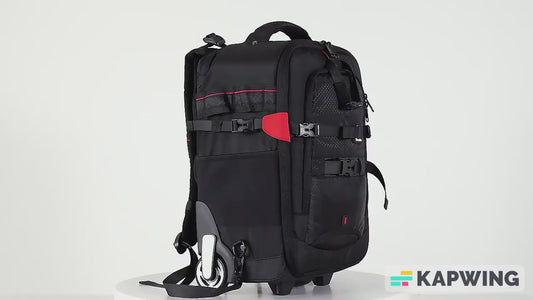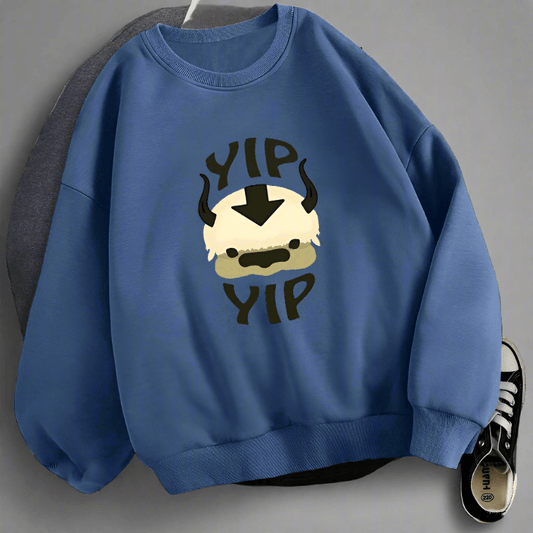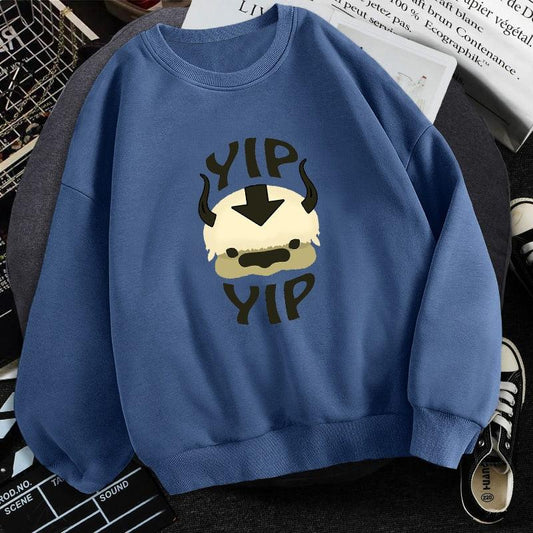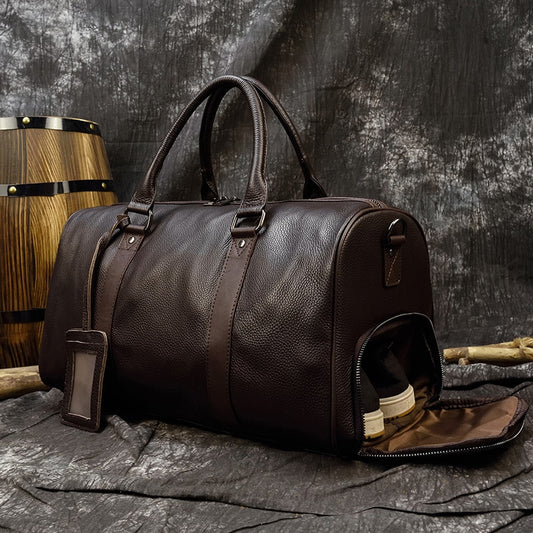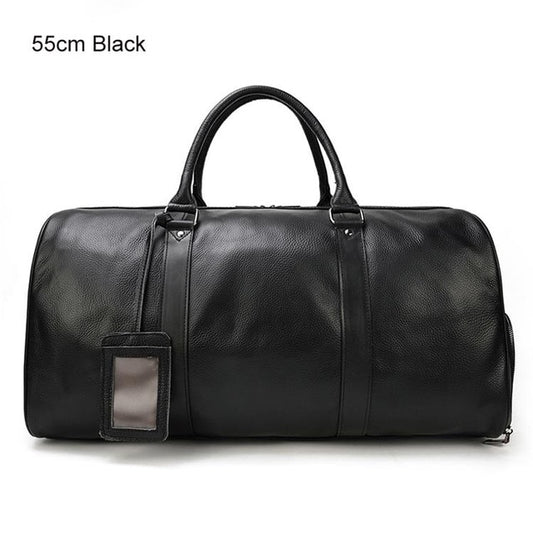Celebrating Secondhand Wardrobe Day: A Sustainable Fashion Revolution
Did you know that Americans discard over 13 million tons of clothing annually? This staggering statistic underscores the urgent need for sustainable fashion alternatives. Enter Secondhand Wardrobe Day, a national event observed on August 25th that promotes eco-conscious shopping habits and celebrates the art of thrifting. This day serves as a reminder of the environmental and economic benefits of embracing secondhand fashion, offering a powerful antidote to the wasteful practices of fast fashion.
Secondhand Wardrobe Day is more than just a date on the calendar; it's a movement towards a more sustainable future. By encouraging individuals to shop secondhand, this event aims to reduce clothing waste, conserve resources, and foster a more responsible approach to fashion consumption. As we delve into the world of thrifting and sustainable fashion, we'll explore practical tips, environmental impacts, and the evolving landscape of secondhand shopping.
Background and Context
Historical Context of Secondhand Shopping
The roots of organized secondhand shopping can be traced back to the early 20th century. In 1902, Reverend Edgar J. Helms established the first Goodwill store, marking a significant milestone in the history of thrift shopping. This initiative was a direct response to the rampant consumerism triggered by the industrial revolution, offering a more sustainable and affordable alternative to new clothing purchases.
Evolution of Secondhand Shopping
Over the decades, secondhand shopping has undergone a remarkable transformation. What began as a necessity for many has evolved into a conscious choice for environmentally aware consumers. The COVID-19 pandemic accelerated this evolution, forcing many traditional thrift stores to pivot to online platforms. This shift not only increased accessibility but also raised awareness about the benefits of secondhand shopping among a broader audience.
"By buying and reusing clothing items, we are living a more sustainable lifestyle and conserving Earth's resources. Every day tons of perfectly usable clothing items are discarded and thrown into landfills and incinerators. By extending the longevity of a piece of clothing, we can reduce waste, save money, and help preserve the environment."
Current Relevance and Importance
Today, secondhand shopping stands at the intersection of environmental consciousness and fashion. The environmental impact of fast fashion has become increasingly apparent, with the fashion industry being one of the largest polluters globally. According to recent statistics, a single pair of jeans requires about 1,800 gallons of water in the manufacturing process, highlighting the resource-intensive nature of clothing production.
Social media has played a crucial role in popularizing sustainable fashion choices. Platforms like Instagram and TikTok have become hubs for thrifting enthusiasts to share their finds, tips, and style inspirations, further fueling the secondhand shopping movement.
Understanding Secondhand Wardrobe Day
What is Secondhand Wardrobe Day?
Secondhand Wardrobe Day, celebrated on August 25th, is a national event dedicated to promoting sustainable fashion through secondhand shopping. The purpose of this day is multifaceted:
- Raise awareness about the environmental impact of fast fashion
- Encourage consumers to consider secondhand options before buying new
- Celebrate the creativity and uniqueness of thrifted fashion
- Support local thrift stores and charitable organizations
Environmental Benefits of Secondhand Shopping
The environmental benefits of secondhand shopping are substantial:
- Reduction in Clothing Waste: By giving clothes a second life, we significantly reduce the amount of textile waste ending up in landfills.
- Conservation of Resources: The production of new clothing requires vast amounts of water, energy, and raw materials. Secondhand shopping helps conserve these resources by reducing the demand for new production.
- Decrease in Pollution: The textile industry is a major contributor to water pollution and greenhouse gas emissions. Choosing secondhand items helps mitigate these environmental impacts.
Economic Advantages
Secondhand shopping offers several economic benefits:
- Cost Savings for Consumers: Thrifted items are typically much less expensive than new clothing, allowing consumers to save money while still updating their wardrobes.
- Support for Local Economies: Many thrift stores are run by local charities or small businesses. Shopping at these establishments helps support local economies and create jobs in the community.
- Charitable Contributions: Many thrift stores operated by non-profit organizations use their proceeds to fund various social programs, turning your shopping into a form of indirect charitable giving.
The Impact of Secondhand Shopping
Environmental Impact
The environmental impact of secondhand shopping extends far beyond just reducing waste:
- Reduction in Textile Manufacturing Pollution: The textile industry is responsible for significant water pollution and chemical runoff. By reducing the demand for new clothing, secondhand shopping helps decrease this pollution.
- Decrease in Landfill Waste: Only 10-20% of donated clothes make it to the commercial floor of thrift stores, with the rest often ending up in landfills. By extending the life of clothing through secondhand purchases, we can significantly reduce this waste.
- Carbon Footprint Reduction: The production and transportation of new clothing contribute to greenhouse gas emissions. Choosing secondhand items helps reduce these emissions.
Social Impact
Secondhand shopping has far-reaching social implications:
- Affordable Clothing Options: Thrift stores provide affordable clothing options for low-income households, ensuring that quality clothing is accessible to a broader range of people.
- Job Creation: The secondhand market creates jobs in local communities, from thrift store employees to online resellers.
- Community Building: Thrift stores often serve as community hubs, fostering connections and supporting local initiatives.
Fashion Industry Impact
The rise of secondhand shopping is reshaping the fashion industry:
- Shift Towards Sustainable Practices: As consumers increasingly opt for secondhand items, many fashion brands are being forced to reconsider their production practices and move towards more sustainable models.
- Emergence of Online Marketplaces: The secondhand market has given rise to numerous online platforms dedicated to reselling used clothing, creating a new sector within the fashion industry.
- Changing Consumer Attitudes: The popularity of secondhand shopping is shifting consumer attitudes towards fashion, with many now valuing sustainability and uniqueness over brand names and trends.
Current Trends in Sustainable Fashion
The sustainable fashion landscape is continuously evolving, with several key trends emerging:
- Rise of Online Thrifting Platforms: Websites and apps like ThredUp, Poshmark, and Depop have made secondhand shopping more accessible than ever, allowing users to browse and purchase thrifted items from the comfort of their homes.
- Clothing Rentals and Subscription Services: Companies like Rent the Runway offer clothing rental services, allowing consumers to enjoy variety in their wardrobes without the need for permanent purchases.
- Upcycling and Repurposing Clothing: There's a growing trend of transforming old or damaged clothing into new, unique pieces through upcycling techniques.
- Minimalism and Capsule Wardrobes: Many consumers are embracing minimalism, opting for smaller, more curated wardrobes composed of versatile, high-quality pieces.
- Sustainable Materials: Even in new clothing production, there's a shift towards using more sustainable materials like organic cotton, recycled polyester, and Tencel.
These trends reflect a broader shift in consumer consciousness towards more sustainable and ethical fashion choices.
Challenges and Controversies
While secondhand shopping offers numerous benefits, it's not without its challenges and controversies:
Overconsumption in Thrifting
One of the paradoxes of thrifting is that it can sometimes lead to overconsumption. As an industry expert points out:
"Thrifting now provides an ethical way for people to interact with fashion. However, this encourages a glorification of consumption. Now, everyone can feel morally obligated to buy more clothes with the money they were already spending on fast fashion and simply re-donate the clothes they don't need anymore."
This perspective highlights the need for mindful consumption, even when shopping secondhand. The ease and affordability of thrifting can sometimes lead to impulse purchases and accumulation of unnecessary items, which goes against the principles of sustainability.
Quality and Waste Issues in Donations
A significant challenge in the secondhand clothing industry is the quality of donations and the resulting waste. Statistics show that only 10-20% of donated clothes make it to the commercial floor of thrift stores. The rest are often discarded or sent to landfills, contributing to the very problem that secondhand shopping aims to solve.
This issue stems from several factors:
- Poor quality of fast fashion items that don't hold up for resale
- Donations of damaged or soiled clothing
- Oversaturation of certain types of clothing in the donation stream
To address this, there's a growing emphasis on educating donors about responsible donation practices and encouraging manufacturers to produce more durable clothing.
Balancing Affordability and Ethical Considerations
While thrifting provides affordable options for many, there are concerns about the gentrification of thrift stores. As thrifting becomes trendy, prices in some stores have increased, potentially pricing out those who rely on these stores for affordable clothing.
Additionally, there are ethical considerations around the global trade of secondhand clothing. While donating clothes might seem beneficial, the influx of Western secondhand clothing to developing countries can sometimes disrupt local textile industries.
How to Thrift Successfully
Mastering the art of thrifting can lead to a more sustainable wardrobe and significant savings. Here's a comprehensive guide to successful thrifting:
Research and Planning
- Identify Personal Style Preferences: Before hitting the thrift stores, have a clear idea of your personal style. This will help you focus your search and avoid impulse purchases.
- Set a Budget and Shopping Goals: Determine how much you're willing to spend and what specific items you're looking for. This helps prevent overspending and ensures you find pieces you'll actually use.
- Research Thrift Stores in Your Area: Not all thrift stores are created equal. Some specialize in certain types of clothing or cater to specific demographics. Research to find stores that align with your needs.
Navigating Thrift Stores Effectively
- Best Days and Times to Shop: Many thrift stores restock on specific days. Shopping early in the week or right after restocking can give you access to the best selection.
- Organizing Your Search by Section: Most thrift stores organize clothes by type (e.g., shirts, pants, dresses) and sometimes by color. Start with the sections that align with your shopping goals.
- Be Patient and Thorough: Thrifting often requires more time and patience than conventional shopping. Don't rush through racks – take your time to examine items carefully.
Evaluating Secondhand Items
-
Checking for Quality and Durability:
- Examine seams and stitching for any loose threads or gaps
- Check for signs of excessive wear, such as pilling or fading
- Test zippers, buttons, and other closures to ensure they work properly
-
Assessing Potential for Alterations or Upcycling:
- Consider if slightly oversized items can be tailored
- Look for high-quality fabrics that could be repurposed or upcycled
- Envision how you might modify an item to better suit your style
Styling Thrifted Pieces
- Mixing Vintage with Modern Items: Combine thrifted vintage pieces with contemporary items to create a unique, personalized style.
- Accessorizing to Elevate Thrifted Outfits: Use accessories like belts, scarves, or jewelry to update and elevate thrifted clothing.
- Experimenting with Layering: Use layering techniques to create new looks with thrifted pieces and adapt them to different seasons.
By following these guidelines, you can navigate the world of thrifting more effectively, building a sustainable wardrobe that reflects your personal style while contributing to a more eco-friendly fashion ecosystem.
FAQ Section
FAQ Section
What is National Secondhand Wardrobe Day?
National Secondhand Wardrobe Day is celebrated on August 25th to promote sustainable fashion and secondhand shopping, encouraging people to reduce clothing waste and adopt more environmentally friendly shopping habits.
How does thrifting help the environment?
Thrifting helps by diverting clothing from landfills, reducing the need for new clothing production, and conserving resources such as water and reducing chemical pollution.
What percentage of donated clothes are sold in thrift stores?
Only 10-20% of donated clothes make it to the commercial floor of thrift stores, while the rest are often discarded or sent to landfills.
How can I celebrate National Secondhand Wardrobe Day?
You can celebrate by sharing your thrifted finds on social media, hosting a clothing swap, educating others about sustainable fashion, and supporting local thrift stores.
What are some tips for successful secondhand shopping?
Some tips include: defining your style, inspecting garments carefully, trying everything on, mixing and matching items, and exploring accessories. For more detailed tips, refer to our "How to Thrift Successfully" section above.
How to Thrift Successfully
A step-by-step guide to mastering the art of thrifting for a sustainable wardrobe.
Define Your Style
Before hitting the thrift stores, have a clear idea of the styles, colors, and silhouettes you're interested in.
Inspect Carefully
Check garments for any signs of wear, stains, or damage.
Try Everything On
Sizes can vary widely between brands and eras, so it's important to try on items before purchasing.
Mix and Match
Experiment with your style by combining vintage pieces with modern ones.
Don't Forget Accessories
Explore accessories like belts, scarves, and jewelry to complete your thrifted looks.
Key Takeaways
-
Sustainability: Secondhand shopping significantly reduces waste and conserves resources.
-
Affordability: Thrift stores offer budget-friendly options for updating your wardrobe.
-
Unique Style: Secondhand stores provide access to one-of-a-kind items that can set your style apart.
-
Social Responsibility: Supporting thrift stores often means supporting local businesses and reducing fast fashion consumption.
Notable Quotes
"By buying and reusing clothing items, we are living a more sustainable lifestyle and conserving Earth's resources."
"Thrifting now provides an ethical way for people to interact with fashion. However, this encourages a glorification of consumption."
"Every day tons of perfectly usable clothing items are discarded and thrown into landfills and incinerators."
Additional Resources
Challenges and Ethical Considerations
Challenges
-
Overconsumption: The tendency to buy more than needed due to lower prices at thrift stores.
-
Quality Control: Ensuring that donated items are functional and of good quality to avoid passing the burden of disposal to others.
Ethical Considerations
-
Fair Pricing: Ensuring that thrift stores do not exploit low-income households by keeping prices affordable.
-
Responsible Donations: Donating functional items to avoid passing the burden of disposal to others.
-
Transparency: Being transparent about the fate of donated items and the environmental impact of secondhand shopping.
Historical Context and Development
The concept of secondhand shopping has evolved significantly since its early beginnings:
-
Early 20th Century: The first Goodwill store was opened in 1902 by Reverend Edgar J. Helms, marking the beginning of organized secondhand shopping.
-
Modern Era: The COVID-19 pandemic accelerated the shift towards online thrift shopping, making secondhand clothing more accessible and popular.
This historical context highlights the growth and adaptation of secondhand shopping over the years, aligning with broader trends in sustainable fashion.
Conclusion
As we celebrate Secondhand Wardrobe Day, it's clear that the shift towards sustainable fashion through secondhand shopping is more than just a trend – it's a necessary evolution in our approach to clothing consumption. By embracing secondhand fashion, we not only reduce waste and conserve resources but also discover unique ways to express our personal style.
The benefits of secondhand shopping extend far beyond individual wardrobes. It supports local economies, provides affordable clothing options, and challenges the fast fashion industry to adopt more sustainable practices. As consumers, we have the power to drive this change through our choices.
Whether you're a seasoned thrifter or new to the world of secondhand shopping, National Secondhand Wardrobe Day offers a perfect opportunity to explore this sustainable fashion alternative. By participating, you're not just updating your wardrobe; you're contributing to a more sustainable and ethical fashion future.
Remember, every secondhand purchase is a step towards a more sustainable future. Your choices matter, and together, we can transform the fashion industry into a force for positive change. So, this August 25th and beyond, let's celebrate and embrace the beauty of secondhand fashion – for our wallets, our planet, and our style.
FAQ Section
What is National Secondhand Wardrobe Day?
National Secondhand Wardrobe Day is celebrated on August 25th to promote sustainable fashion and secondhand shopping, encouraging people to reduce clothing waste and adopt more environmentally friendly shopping habits.
How does thrifting help the environment?
Thrifting helps by diverting clothing from landfills, reducing the need for new clothing production, and conserving resources such as water and reducing chemical pollution.
What percentage of donated clothes are sold in thrift stores?
Only 10-20% of donated clothes make it to the commercial floor of thrift stores, while the rest are often discarded or sent to landfills.
How can I celebrate National Secondhand Wardrobe Day?
You can celebrate by sharing your thrifted finds on social media, hosting a clothing swap, educating others about sustainable fashion, and supporting local thrift stores.
What are some tips for successful secondhand shopping?
Some tips include: defining your style, inspecting garments carefully, trying everything on, mixing and matching items, and exploring accessories. For more detailed tips, refer to our "How to Thrift Successfully" section above.
How to Thrift Successfully
A step-by-step guide to mastering the art of thrifting for a sustainable wardrobe.
Define Your Style
Before hitting the thrift stores, have a clear idea of the styles, colors, and silhouettes you're interested in.
Inspect Carefully
Check garments for any signs of wear, stains, or damage.
Try Everything On
Sizes can vary widely between brands and eras, so it's important to try on items before purchasing.
Mix and Match
Experiment with your style by combining vintage pieces with modern ones.
Don't Forget Accessories
Explore accessories like belts, scarves, and jewelry to complete your thrifted looks.
Key Takeaways
- Sustainability: Secondhand shopping significantly reduces waste and conserves resources.
- Affordability: Thrift stores offer budget-friendly options for updating your wardrobe.
- Unique Style: Secondhand stores provide access to one-of-a-kind items that can set your style apart.
- Social Responsibility: Supporting thrift stores often means supporting local businesses and reducing fast fashion consumption.
Notable Quotes
"By buying and reusing clothing items, we are living a more sustainable lifestyle and conserving Earth's resources."
"Thrifting now provides an ethical way for people to interact with fashion. However, this encourages a glorification of consumption."
"Every day tons of perfectly usable clothing items are discarded and thrown into landfills and incinerators."
Additional Resources
Challenges and Ethical Considerations
Challenges
- Overconsumption: The tendency to buy more than needed due to lower prices at thrift stores.
- Quality Control: Ensuring that donated items are functional and of good quality to avoid passing the burden of disposal to others.
Ethical Considerations
- Fair Pricing: Ensuring that thrift stores do not exploit low-income households by keeping prices affordable.
- Responsible Donations: Donating functional items to avoid passing the burden of disposal to others.
- Transparency: Being transparent about the fate of donated items and the environmental impact of secondhand shopping.
Historical Context and Development
The concept of secondhand shopping has evolved significantly since its early beginnings:
- Early 20th Century: The first Goodwill store was opened in 1902 by Reverend Edgar J. Helms, marking the beginning of organized secondhand shopping.
- Modern Era: The COVID-19 pandemic accelerated the shift towards online thrift shopping, making secondhand clothing more accessible and popular.
This historical context highlights the growth and adaptation of secondhand shopping over the years, aligning with broader trends in sustainable fashion.
Conclusion
As we celebrate Secondhand Wardrobe Day, it's clear that the shift towards sustainable fashion through secondhand shopping is more than just a trend – it's a necessary evolution in our approach to clothing consumption. By embracing secondhand fashion, we not only reduce waste and conserve resources but also discover unique ways to express our personal style.
The benefits of secondhand shopping extend far beyond individual wardrobes. It supports local economies, provides affordable clothing options, and challenges the fast fashion industry to adopt more sustainable practices. As consumers, we have the power to drive this change through our choices.
Whether you're a seasoned thrifter or new to the world of secondhand shopping, National Secondhand Wardrobe Day offers a perfect opportunity to explore this sustainable fashion alternative. By participating, you're not just updating your wardrobe; you're contributing to a more sustainable and ethical fashion future.
Remember, every secondhand purchase is a step towards a more sustainable future. Your choices matter, and together, we can transform the fashion industry into a force for positive change. So, this August 25th and beyond, let's celebrate and embrace the beauty of secondhand fashion – for our wallets, our planet, and our style.
Success Stories and Testimonials
Case Study: Goodwill Stores' Long-term Success
Goodwill Industries International has been a pioneer in the secondhand market since its inception in 1902. Today, it operates over 3,300 stores across the United States and Canada, serving millions of customers annually. Goodwill's success lies not just in its retail operations but in its mission to provide job training and placement services.
Key factors in Goodwill's success:
- Strong community connections and partnerships
- Effective job training and placement programs
- Consistent branding and store experience
- Adaptation to changing consumer trends
In 2020, despite the challenges posed by the COVID-19 pandemic, Goodwill organizations collectively diverted over 4 billion pounds of usable goods from landfills. This success story demonstrates the enduring power of the secondhand market and its potential for positive social and environmental impact.
Personal Testimonials from Thrifting Enthusiasts
"Thrifting has completely transformed my wardrobe and my perspective on fashion. I've found designer pieces for a fraction of their original cost, and I love the thrill of the hunt. It's not just about saving money; it's about expressing my creativity and reducing my environmental footprint."
"As someone passionate about sustainability, thrifting aligns perfectly with my values. I've furnished my entire apartment with secondhand finds, from vintage furniture to unique decor pieces. It's incredible how much you can reduce waste by choosing pre-loved items."
"Thrifting has been a game-changer for our family budget. With growing kids, it's fantastic to find high-quality clothing at affordable prices. Plus, it's become a fun weekend activity for us – we love exploring different thrift stores together."
Celebrity Endorsements of Secondhand Fashion
Many celebrities have embraced and promoted secondhand fashion, lending star power to the movement:
- Macklemore: The rapper's hit song "Thrift Shop" brought thrifting into the mainstream spotlight, celebrating the unique style and affordability of secondhand clothing.
- Julia Roberts: The Oscar-winning actress has been spotted wearing vintage gowns on red carpets, showcasing how secondhand fashion can be glamorous and sustainable.
- Shailene Woodley: Known for her environmental activism, Woodley has spoken about her preference for thrifted clothing and has worn secondhand outfits to major events.
- Zooey Deschanel: The actress and singer is a vocal advocate for vintage fashion and has shared her thrifting tips in interviews and on social media.
These celebrity endorsements have helped destigmatize secondhand fashion and inspire fans to explore thrifting as a stylish and sustainable option.
Tools and Resources for Secondhand Shopping
To make your secondhand shopping experience more efficient and enjoyable, consider using these tools and resources:
Mobile Apps for Thrifting and Clothes Swapping
- ThredUp: This app offers a vast selection of secondhand clothing from various brands, making it easy to browse and purchase items from your phone.
- Poshmark: A social marketplace where users can buy and sell secondhand fashion, accessories, and home goods.
- Depop: Popular among younger users, Depop combines social media features with a marketplace for vintage and secondhand items.
- Vinted: This app focuses on peer-to-peer selling of secondhand clothing, allowing users to buy, sell, and swap items directly.
- Swappy: A clothes-swapping app that enables users to exchange clothing items with others in their local area or ship nationwide.
Online Platforms for Secondhand Designer Items
- The RealReal: Specializes in authenticated luxury consignment, offering high-end designer items at discounted prices.
- Vestiaire Collective: A global platform for buying and selling pre-owned luxury fashion, with a focus on authenticity and quality.
- Rebag: Dedicated to secondhand designer handbags and accessories, with a rigorous authentication process.
- Grailed: A community marketplace for men's clothing, featuring a mix of streetwear, vintage, and high-end designer items.
Local Thrift Store Directories and Maps
- ThriftShopper.com: Offers a comprehensive directory of thrift stores across the United States, searchable by location.
- Google Maps: Use the "thrift stores near me" search to find local options, complete with reviews and directions.
- Yelp: Provides user reviews and ratings for local thrift stores, helping you identify the best options in your area.
- National Association of Resale Professionals (NARTS): Offers a directory of member stores, including thrift shops, consignment stores, and resale boutiques.
- Goodwill Store Locator: Find Goodwill stores and donation centers in your area using their official website.
By utilizing these tools and resources, you can enhance your secondhand shopping experience, whether you prefer in-person thrifting or online marketplaces. These platforms make it easier than ever to find unique, sustainable fashion options and contribute to a more circular economy in the fashion industry.
Final Thoughts: Embracing Sustainable Fashion
As we conclude our exploration of National Secondhand Wardrobe Day and the world of thrifting, it's clear that secondhand shopping is more than just a trend – it's a powerful movement towards sustainability in fashion. By choosing secondhand items, we're not only saving money and finding unique pieces but also making a significant positive impact on the environment.
Remember, every secondhand purchase is a step towards reducing waste, conserving resources, and challenging the fast fashion industry. Whether you're a seasoned thrifter or just starting your sustainable fashion journey, there's never been a better time to embrace secondhand shopping.
This August 25th, let's celebrate National Secondhand Wardrobe Day by visiting a local thrift store, organizing a clothing swap with friends, or exploring online secondhand marketplaces. Share your thrifted finds on social media using hashtags like #SecondhandWardrobeDay or #ThriftingForChange to inspire others and spread awareness about sustainable fashion choices.
Together, we can create a more sustainable and ethical fashion industry – one secondhand purchase at a time. Happy thrifting!


